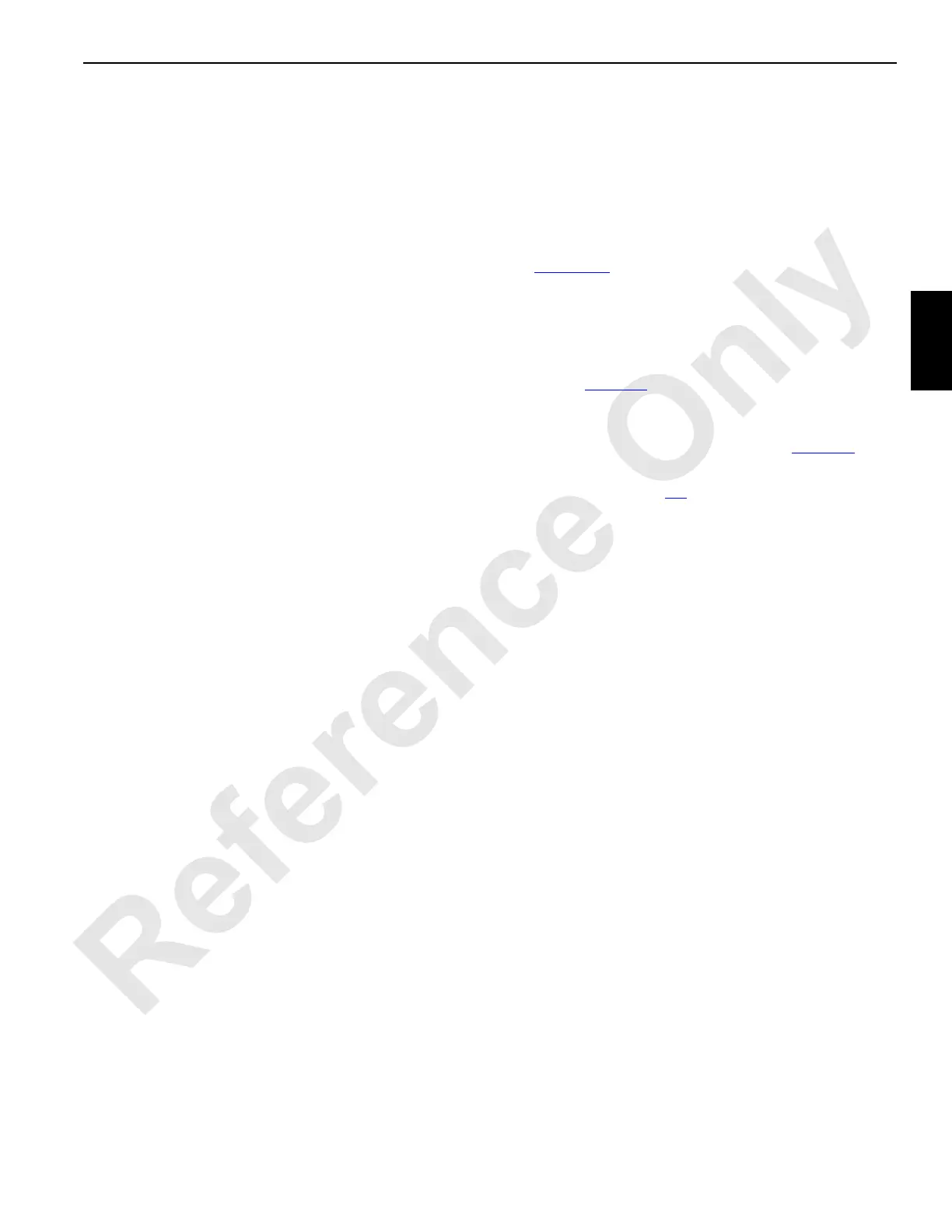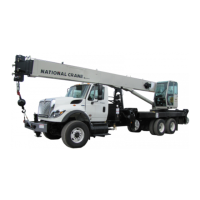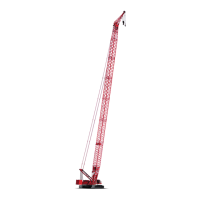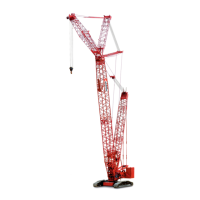Manitowoc Published 09-05-14, Control # 226-02 3-37
14000 SERVICE MANUAL ELECTRIC SYSTEM
Boom Node Status Box
Displays boom top and luffing jib communication. The box
indicates what nodes may be available on the bus:
• Number 0 = No nodes detected.
• Number 1 = boom top node is present.
• Number 2 = luffing jib node is present.
• Number 3 = boom top and luffing node is present.
The status of the boom RIN shorting plug is shown at CAN
113-4-
• Number 32 = plug not installed.
• Number 33 = plug installed.
The status of the RIN system between the boom top RIN and
the luffing jib RIN is shown at CAN 84-8-
• Number 0 = signal low (open circuit: for example,
shorting plug not connected to boom top RIN).
• Number 64 = signal high (no communication).
• Number 128 = signal okay (RIN is communicating
properly).
Using the CAN Bus Screen to Troubleshoot
a Digital Output Fault
Fault 84 occurs when the control system detects an open or
short circuit in one of the system’s digital outputs (most
digital outputs are monitored for fault 84).
If fault 84 is shown in fault section of Information screen, use
following procedure:
See Figure 3-31
for following procedure.
1. Scroll through Packet Numbers 30, 31, and 33.
2. Banks 1, 2, and 3 should display number 255. If a
number less than 255 is displayed, there is a digital
output error.
a. On Table 3-8
, look up the number that appears on
the display.
b. If, for example, the number 21 appears in Bank 1 of
Packet Number 31, look up 21 on Table 3-8
. Note
that the values 1, 4, and 16 are not shaded.
c. Go to Table 3-7
and determine the outputs
associated with 31-1-1, 31-1-4, and 31-1-16.
d. Investigate indicated outputs for short to ground,
short to shield, or other problem.
Camera Screen (Optional)
The camera screen (not shown) displays camera options
and items for selecting and operating. Camera options
include up to three different cameras to monitor drum
spooling and area behind crane.
Use Select buttons to select camera screen on Menu screen.
Press Enter button to access screen.
Use Select buttons to select desired camera view.
Press Exit button until Menu screen appears.
Pressure Test and Calibration Screen
Pressure Test and Calibration Screen is used to initiate and
monitor four hydraulic test and calibration procedures. For
instructions, refer to Section 2.

